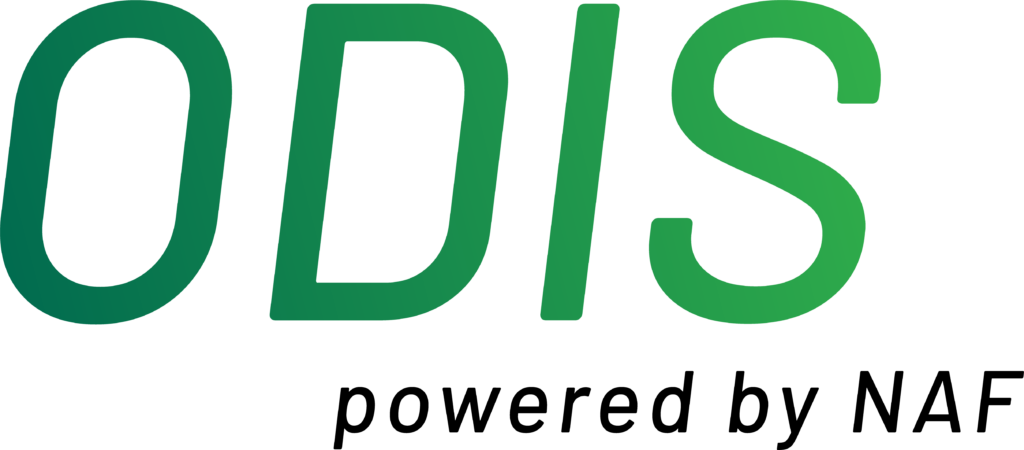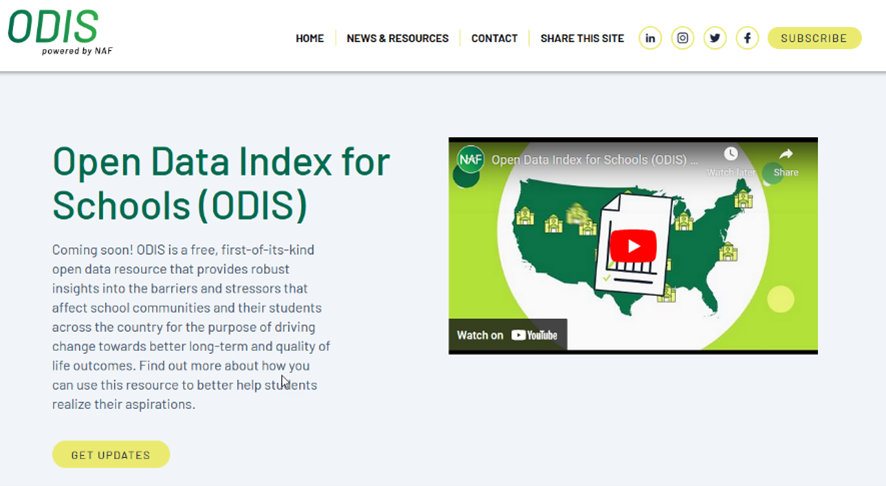ODIS Version 1.0 Is Now Live!

As we celebrate the launch of the Open Data Index for Schools (ODIS) to the public this week, four themes have become clear. We share them below to recognize how far we’ve come, and with the hope that you will join us on this journey, by checking out the tool itself here and by checking out the ODIS microsite. Our microsite contains valuable information about this free, first-of-its-kind open data resource, as well as a chance to sign up for updates, opportunities related to the work, or to inquire about having a conversation with a NAF representative to explore how ODIS can aid you in your own efforts and support the audiences that you are trying to reach.
You can read about why NAF set out to organize a tool to understand high school students’ socio-economic hurdles beyond free lunch in our earlier posts, here and here.
One: The need is abundantly clear.
We’ve piloted working versions of ODIS with user groups across the research and philanthropy spectrums, and the support has been very high because the need is abundantly clear. Our partners at New York University’s Marron Institute of Urban Management effectively describe it as follows:

Two: ODIS is a sensemaking tool for practitioners, and we already know more than what Free-and-reduced-price lunch could tell us about the schools we support.
ODIS was built with NAF in mind as the very first user. Before setting out to understand more about the impact that NAF academies have on our students in their journeys over several years (the topic of our current longitudinal work), we need to understand the spectrum of factors that they must succeed in spite of. After more than 40 years of service to schools, we understand the needs of individual school communities better than ever and know the value of actionable intelligence garnered from understanding those needs. Insights from ODIS have let us quantitatively see that more than half of the school communities NAF works with are in the top 25th percentile in terms of educational need, and on 4 of the 5 ODIS domains overall, NAF school communities rank up to 17% higher than the national picture, in terms of community challenges and barriers. But no two are “the same.” The contours of ODIS data enable our organization to gain deeper insights into what students face and to frame new questions for our work.
Three: We couldn’t have anticipated the added relevance of ODIS post-SCOTUS Affirmative Action Ruling.
Some of the U.S.’s most revered public higher education institutions have shifted to data-rich proxies for directing resources and defining equitable admissions parameters. This article from Inside Higher Ed summarizes, “context is key when it comes to holistic and equitable admissions, according to new research from the American Educational Research Association.” Last July, the New York Times profiled the University of California, Davis, Medical School, where “adversity scores” are being used as a factor in admissions. What we realize from these examples is that soon everyone will be responsible for knowing more about their school community, and that’s a good thing. As NAF learns more about the data landscape for so many U.S. schools, it enables the organization to extend what we know to corporate partners and programmatic allies who have local interests and want to join us in supporting student success beginning much earlier in their journey.
Four: Everyone has a different focus and while data can make a picture clearer, it is no substitute for working directly with communities
Whether your work focuses on access to healthcare, economic stability, or crime, ODIS provides details of 17 indicators used frequently by policymakers and data scientists to quantify community needs and challenges. However, when using data to inform community impact, one size will not fit all. While all ODIS metrics are provided to the user on a scale from 1-100, with numbers closer to 1 indicating a lesser challenge related to the domain and numbers closer to 100 indicating more challenge in the domain, how those data are used should inform close community impact work, not replace it. This article published by Charity Village on how data limitations impact communities espouses that anyone doing community impact work or research should keep an open mind to potential limitations in community data and that data describing a community is often a starting point for impactful work. That’s our goal with ODIS. We designed it as a tool to help collaborators carry out mission-driven work through smarter, data-informed dialogue.
We hope you’ll join us in using ODIS and become our active partners in thinking about how to best improve data-driven intelligence to impact school communities. We’ve come a long way since 1946 and Harry Truman’s National School Lunch Act, the original of “free and reduced price lunch metrics,” and ODIS has the data to show it. It’s up to all of us to take action, push the narrative forward, and work smarter when supporting students as they navigate to their success.





